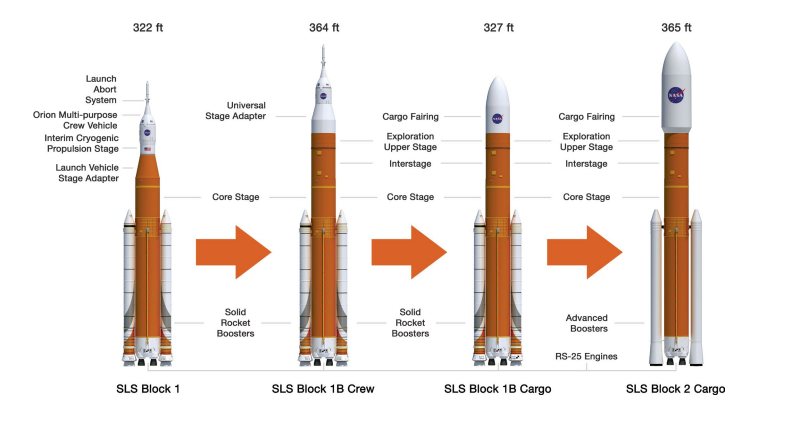Artist Concept of the SLS Block 1. Image: NASA
On Thursday, NASA announced that its Space Launch System, which will be used to carry the first humans to Mars, passed its Critical Design Review (CDR) and is ready for full-scale production. It is the first human-rated rocket to pass a CDR in almost 40 years."We've nailed down the design of SLS, we've successfully completed the first round of testing of the rocket's engines and boosters," said Bill Hill, deputy associate administrator of NASA's Exploration Systems Development Division. "This review gives us confidence that we are on the right track for the first flight of SLS and using it to extend permanent human presence into deep space."The last exploration class rocket was the Saturn V, which was used for human exploration of the moon. The Saturn rockets won't hold a candle to the SLS however, which is being described by NASA as "the most powerful rocket ever built."Over the course of 11 weeks, NASA personnel reviewed over 1000 SLS documents comprising some 150 GB of data, ultimately approving the first of three rocket configurations for full-scale fabrication. Block 1 will stand about 20 feet taller than the Statue of Liberty, have a minimum 77-ton lift capacity and will be used to place the crewless Orion spacecraft in a stable orbit beyond the moon. Additionally, the CDR concluded that the rocket will ditch the Saturn all white color scheme in favor of the burnt orange that is the natural color of the insulation elements of those parts of the rocket. The choice to forego painting the rocket white is more than just an aesthetic one—it will save using 1000 pounds of paint, weight that can instead be used to increase the rocket's payload capacity.The other two SLS configurations are known as 1B and 2, with each block getting slightly more ambitious. Block 1B has a 115-ton lift capacity and will send a crew near or beyond the moon as a proof of concept of the rocket's capacity for deep space travel. Block 2 will have a 143-ton lift capacity and will be the rocket system that takes a crewed Orion mission to Mars.After the SLS Block 1 is manufactured, it will undergo a design certification (sometime in 2017) which will compare the finished product to the initial design. The planned test date of the crewless Orion launch isno later than November 2018.
Additionally, the CDR concluded that the rocket will ditch the Saturn all white color scheme in favor of the burnt orange that is the natural color of the insulation elements of those parts of the rocket. The choice to forego painting the rocket white is more than just an aesthetic one—it will save using 1000 pounds of paint, weight that can instead be used to increase the rocket's payload capacity.The other two SLS configurations are known as 1B and 2, with each block getting slightly more ambitious. Block 1B has a 115-ton lift capacity and will send a crew near or beyond the moon as a proof of concept of the rocket's capacity for deep space travel. Block 2 will have a 143-ton lift capacity and will be the rocket system that takes a crewed Orion mission to Mars.After the SLS Block 1 is manufactured, it will undergo a design certification (sometime in 2017) which will compare the finished product to the initial design. The planned test date of the crewless Orion launch isno later than November 2018.
Advertisement
